Yield Gap Analysis of Alfalfa Grown under Rainfed Condition in Kansas
Abstract
:1. Introduction
2. Materials and Methods
2.1. Study Site
2.2. Defining Growing Season
2.3. Yield Estimation
2.4. Yield Determining Weather Variables
3. Results
3.1. Growing Season Delineation
3.2. Growing Season Rainfall, Temperature and Thermal Units
3.3. Alfalfa Yields, Yield Gaps and WUE
3.4. CIT Analysis
4. Discussion
5. Conclusions
Supplementary Materials
Author Contributions
Funding
Data Availability Statement
Acknowledgments
Conflicts of Interest
References
- Putnam, D.H.; Summers, C.G.; Orloff, S.B. Alfalfa production systems in California. In Irrigated Alfalfa Management for Mediterranean and Desert Zones; University of California, Division of Agriculture and Natural Resource Publication 8287: Davis, CA, USA, 2007; pp. 1–19. Available online: https://alfalfa.ucdavis.edu/irrigatedalfalfa/pdfs/ucalfalfa8287prodsystems_free.pdf (accessed on 9 October 2021).
- Adhikari, L.; Missaoui, A.M. Nodulation response to molybdenum supplementation in alfalfa and its correlation with root and shoot growth in low pH soil. J. Plant Nutr. 2017, 40, 2290–2302. [Google Scholar] [CrossRef]
- USDA-NASS. Data and Statistics. United States Department of Agriculture, National Agricultural Statistics Service. Available online: https://www.nass.usda.gov/Data_and_Statistics/index.php (accessed on 10 January 2022).
- Adhikari, L.; Baral, R.; Paudel, D.R.; Min, D.; Makaju, S.O.; Poudel, H.; Acharya, J.P.; Missaoui, A. Cold stress in plants: Strategies to improve cold tolerance in forage species. Plant Stress 2022, 4, 100081. [Google Scholar] [CrossRef]
- Jia, Y.; Li, F.M.; Zhang, Z.H.; Wang, X.L.; Guo, R.; Siddique, K.H. Productivity and water use of alfalfa and subsequent crops in the semiarid Loess Plateau with different stand ages of alfalfa and crop sequences. Field Crops Res. 2009, 114, 58–65. [Google Scholar] [CrossRef]
- Takele, E.; Kallenbach, R. Analysis of the Impact of Alfalfa Forage Production under Summer Water-Limiting Circumstances on Productivity, Agricultural and Growers Returns and Plant Stand. J. Agron. Crop. Sci. 2001, 187, 41–46. [Google Scholar] [CrossRef]
- Schneekloth, J.; Andales, A. Seasonal Water Needs and Opportunities for Limited Irrigation for Colorado Crops; Colorado State University Extension: Fort Collins, CO, USA, 2017; Available online: https://extension.colostate.edu/topic-areas/agriculture/seasonal-water-needs-and-opportunities-for-limited-irrigation-for-colorado-crops-4-718/ (accessed on 10 October 2021).
- Shewmaker, G.E.; Allen, R.G.; Neibling, W.H. Alfalfa Irrigation and Drought; University of Idaho, College of Agricultural and Life Sciences: Moscow, ID, USA, 2011. Available online: https://efotg.sc.egov.usda.gov/references/public/UT/AlfalfaIrrigationFacts2013Final.pdf (accessed on 15 October 2021).
- Baral, R.; Lollato, R.P.; Bhandari, K.; Min, D. Yield Gap Analysis of Rainfed Alfalfa in the United States. Front. Plant Sci. 2022, 13, 931403. [Google Scholar] [CrossRef] [PubMed]
- K-State Research and Extension. Alfalfa Production Handbook; Kansas State University Agricultural Experiment Station and Cooperative Extension Service: Manhattan, KS, USA, 1998; Available online: https://bookstore.ksre.ksu.edu/pubs/c683.pdf (accessed on 25 September 2021).
- Kansas Mesonet. Historical Weather. Available online: http://mesonet.k-state.edu/weather/historical/ (accessed on 27 March 2022).
- Kansas State Weather Data Library. Monthly Precipitation Map. Available online: http://climate.k-state.edu/precip/county/ (accessed on 21 March 2022).
- Kansas State University. Alfalfa Performance Tests. Department of Agronomy, Kansas State University, Manhattan, KS, USA, 2013. Available online: https://www.agronomy.k-state.edu/services/crop-performance-tests/alfalfa/index.html (accessed on 20 September 2021).
- McDonald, I.; Baral, R.; Min, D. Effects of alfalfa and alfalfa-grass mixtures with nitrogen fertilization on dry matter yield and forage nutritive value. J. Anim. Sci. Technol. 2021, 63, 305–318. [Google Scholar] [CrossRef] [PubMed]
- McDonald, I.; Min, D.; Baral, R. Effect of a Fall Cut on Dry Matter Yield, Nutritive Value, and Stand Persistence of Alfalfa. J. Anim. Sci. Technol. 2021, 63, 799–814. [Google Scholar] [CrossRef]
- NDMC. United States Drought Monitor. Time Series Data on Kansas Percent Area in U.S. Drought Monitor Categories. The National Drought Mitigation Center at the University of Nebraska-Lincoln, the United States Department of Agriculture, and the National Oceanic and Atmospheric Administration. Available online: https://droughtmonitor.unl.edu/DmData/TimeSeries.aspx (accessed on 2 September 2022).
- Jin, N.; Tao, B.; Ren, W.; He, L.; Zhang, D.; Wang, D.; Yu, Q. Assimilating remote sensing data into a crop model improves winter wheat yield estimation based on regional irrigation data. Agric. Water Manag. 2022, 266, 107583. [Google Scholar] [CrossRef]
- Marshall, M.; Belgiu, M.; Boschetti, M.; Pepe, M.; Stein, A.; Nelson, A. Field-level crop yield estimation with PRISMA and Sentinel-2. ISPRS J. Photogramm. Remote Sens. 2022, 187, 191–210. [Google Scholar] [CrossRef]
- Shuai, G.; Basso, B. Subfield maize yield prediction improves when in-season crop water deficit is included in remote sensing imagery-based models. Remote Sens. Environ. 2022, 272, 112938. [Google Scholar] [CrossRef]
- Dehkordi, P.A.; Nehbandani, A.; Hassanpour-bourkheili, S.; Kamkar, B. Yield gap analysis using remote sensing and modelling approaches: Wheat in the northwest of Iran. Int. J. Plant Prod. 2020, 14, 443–452. [Google Scholar] [CrossRef]
- Van Ittersum, M.K.; Cassman, K.G.; Grassini, P.; Wolf, J.; Tittonell, P.; Hochman, Z. Yield gap analysis with local to global relevance—A review. Field Crops Res. 2013, 143, 4–17. [Google Scholar] [CrossRef]
- Lollato, R.P.; Diaz, D.A.R.; DeWolf, E.; Knapp, M.; Peterson, D.E.; Fritz, A.K. Agronomic practices for reducing wheat yield gaps: A quantitative appraisal of progressive producers. Crop Sci. 2019, 59, 333–350. [Google Scholar] [CrossRef]
- Sadras, V.; Cassman, K.; Grassini, P.; Bastiaanssen, W.; Laborte, A.; Milne, A.; Sileshi, G.; Steduto, P. Yield Gap Analysis of Field Crops: Methods and Case Studies. 2015. Available online: https://digitalcommons.unl.edu/cgi/viewcontent.cgi?article=1079&context=wffdocs (accessed on 10 February 2022).
- Soltani, A.; Cinclair, T.R. Modeling Physiology of Crop Development, Growth and Yield; CABi: Wallingford, UK, 2012; pp. 1–309. [Google Scholar]
- PRISM Climate Group. Time Series Values for Individual Locations. Available online: https://prism.oregonstate.edu/explorer/ (accessed on 12 December 2021).
- Fick, G.; Holt, D.; Lugg, D. Environmental physiology and crop growth. Alfalfa Alfalfa Improv. 1988, 29, 163–194. [Google Scholar]
- Onstad, D.W.; Fick, G.W. Predicting crude protein, in vitro true digestibility, and leaf proportion in alfalfa herbage 1. Crop. Sci. 1983, 23, 961–964. [Google Scholar] [CrossRef]
- Purcell, L.C.; Sinclair, T.R.; McNew, R.W. Drought avoidance assessment for summer annual crops using long-term weather data. Agron. J. 2003, 95, 1566–1576. [Google Scholar] [CrossRef]
- Torres, G.M.; Lollato, R.P.; Ochsner, T.E. Comparison of drought probability assessments based on atmospheric water deficit and soil water deficit. Agron. J. 2013, 105, 428–436. [Google Scholar] [CrossRef]
- Neumann, K.; Verburg, P.H.; Stehfest, E.; Müller, C. The yield gap of global grain production: A spatial analysis. Agric. Syst. 2010, 103, 316–326. [Google Scholar] [CrossRef]
- Patrignani, A.; Lollato, R.P.; Ochsner, T.E.; Godsey, C.B.; Edwards, J.T. Yield gap and production gap of rainfed winter wheat in the southern Great Plains. Agron. J. 2014, 106, 1329–1339. [Google Scholar] [CrossRef]
- French, R.; Schultz, J. Water use efficiency of wheat in a Mediterranean-type environment. II. Some limitations to efficiency. Aust. J. Agric. Res. 1984, 35, 765–775. [Google Scholar] [CrossRef]
- Hothorn, T.; Hornik, K.; Zeileis, A. Unbiased recursive partitioning: A conditional inference framework. J. Comput. Graph. Stat. 2006, 15, 651–674. [Google Scholar] [CrossRef] [Green Version]
- Hothorn, T.; Hornik, K.; Zeileis, A. ctree: Conditional Inference Trees. The Comprehensive R Archive Network. Available online: https://cran.biodisk.org/web/packages/partykit/vignettes/ctree.pdf (accessed on 17 June 2022).
- Fink, K.P. Benchmarking Alfalfa Water Use Efficiency and Quantifying Yield Gaps in the US Central Great Plains. Master’s Thesis, Kansas State University, Manhattan, KS, USA, 2021. Available online: https://krex.k-state.edu/dspace/handle/2097/41721 (accessed on 12 May 2022).
- Berg, A.; Sheffield, J. Evapotranspiration partitioning in CMIP5 models: Uncertainties and future projections. J. Clim. 2019, 32, 2653–2671. [Google Scholar] [CrossRef]
- Kool, D.; Agam, N.; Lazarovitch, N.; Heitman, J.; Sauer, T.; Ben-Gal, A. A review of approaches for evapotranspiration partitioning. Agric. For. Meteorol. 2014, 184, 56–70. [Google Scholar] [CrossRef]
- Wagle, P.; Skaggs, T.H.; Gowda, P.H.; Northup, B.K.; Neel, J.P. Flux variance similarity-based partitioning of evapotranspiration over a rainfed alfalfa field using high frequency eddy covariance data. Agric. For. Meteorol. 2020, 285, 107907. [Google Scholar] [CrossRef]
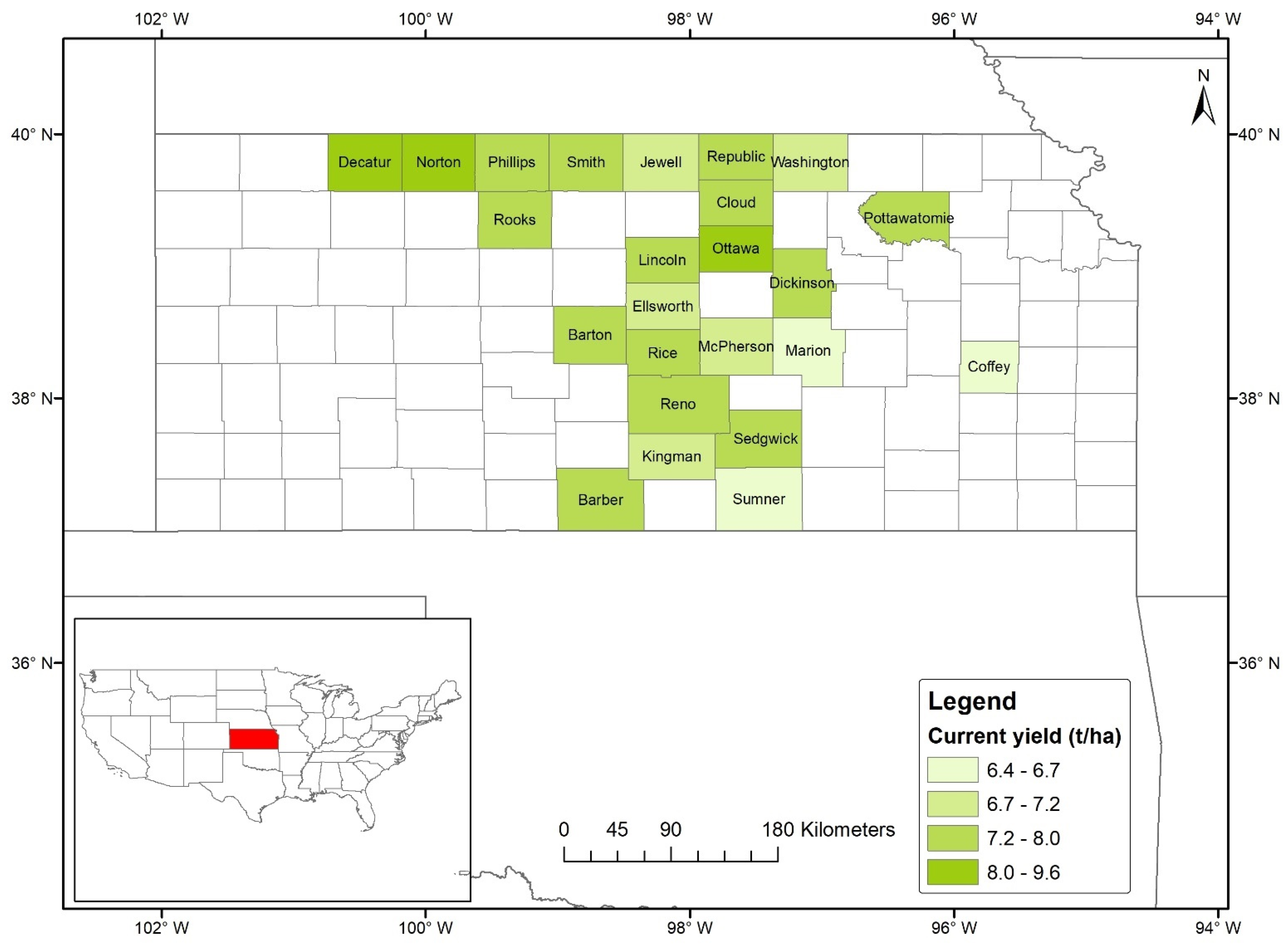
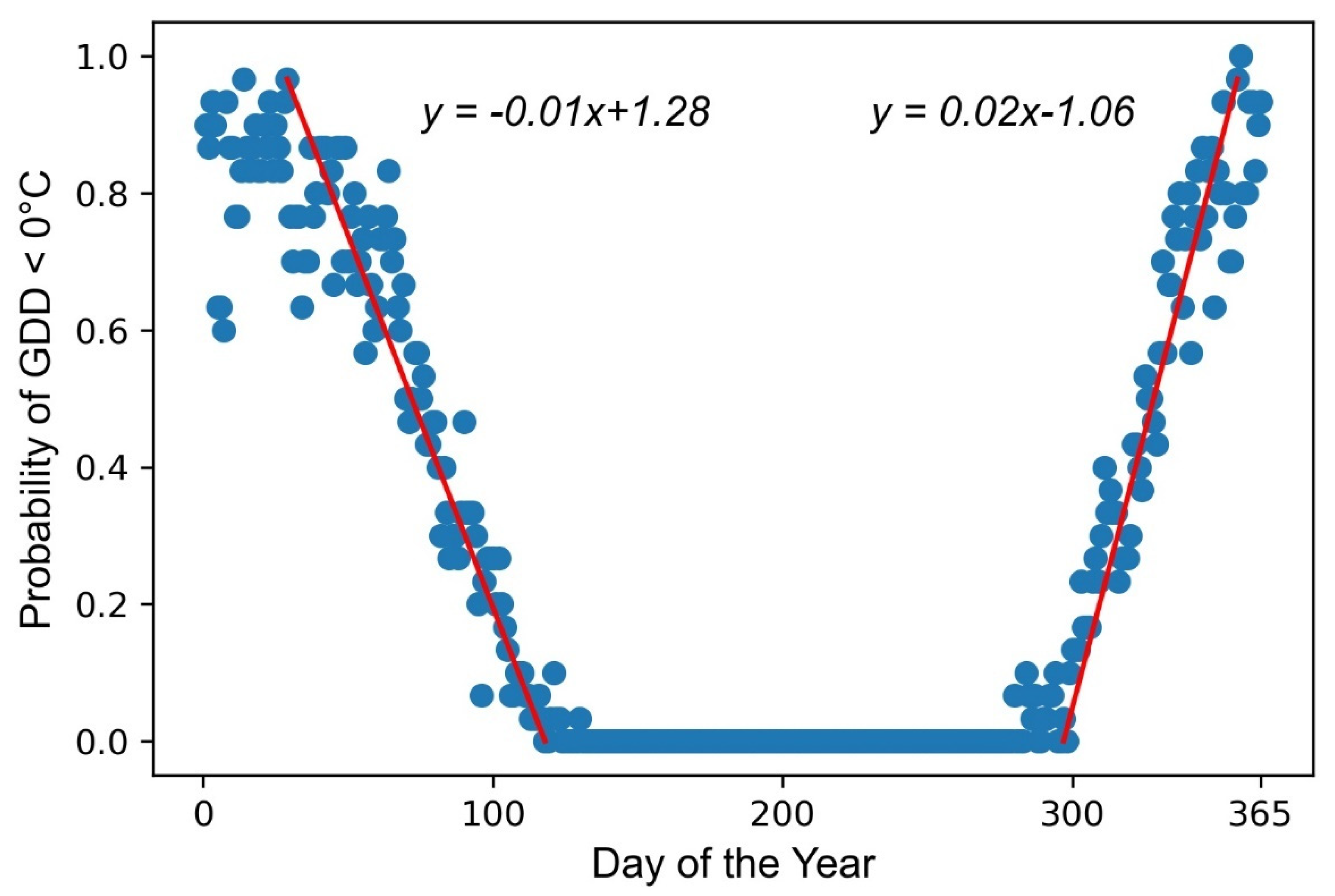
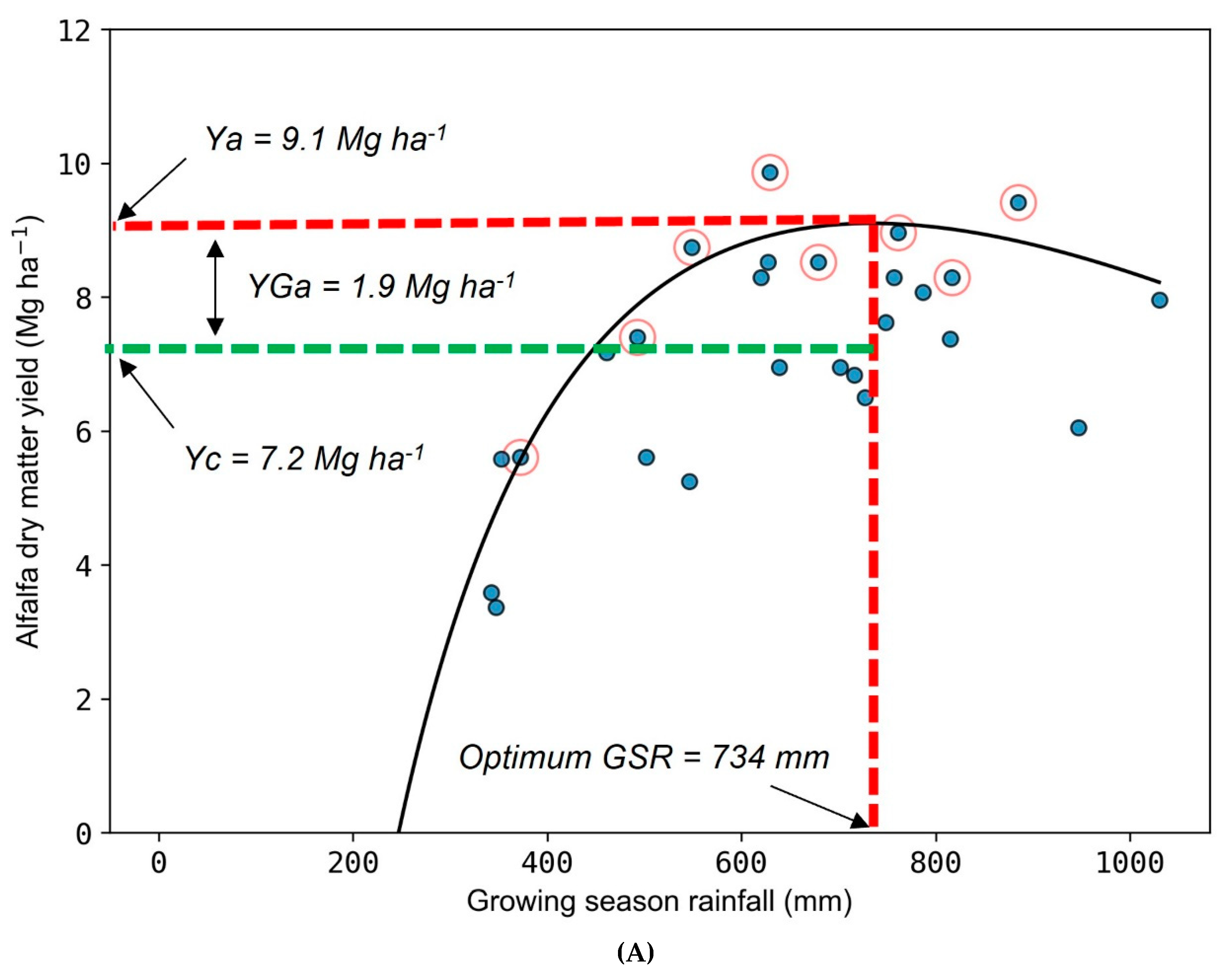
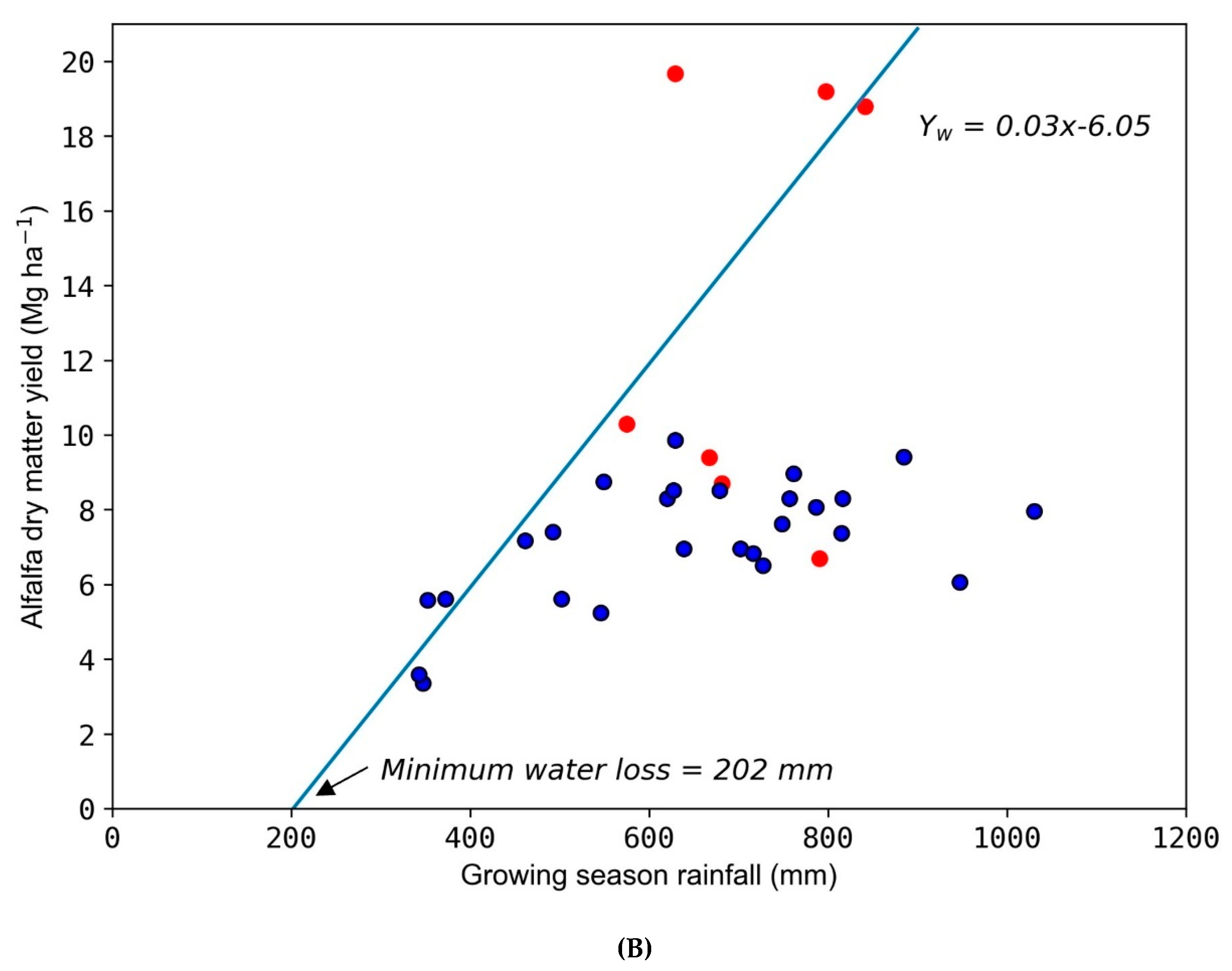
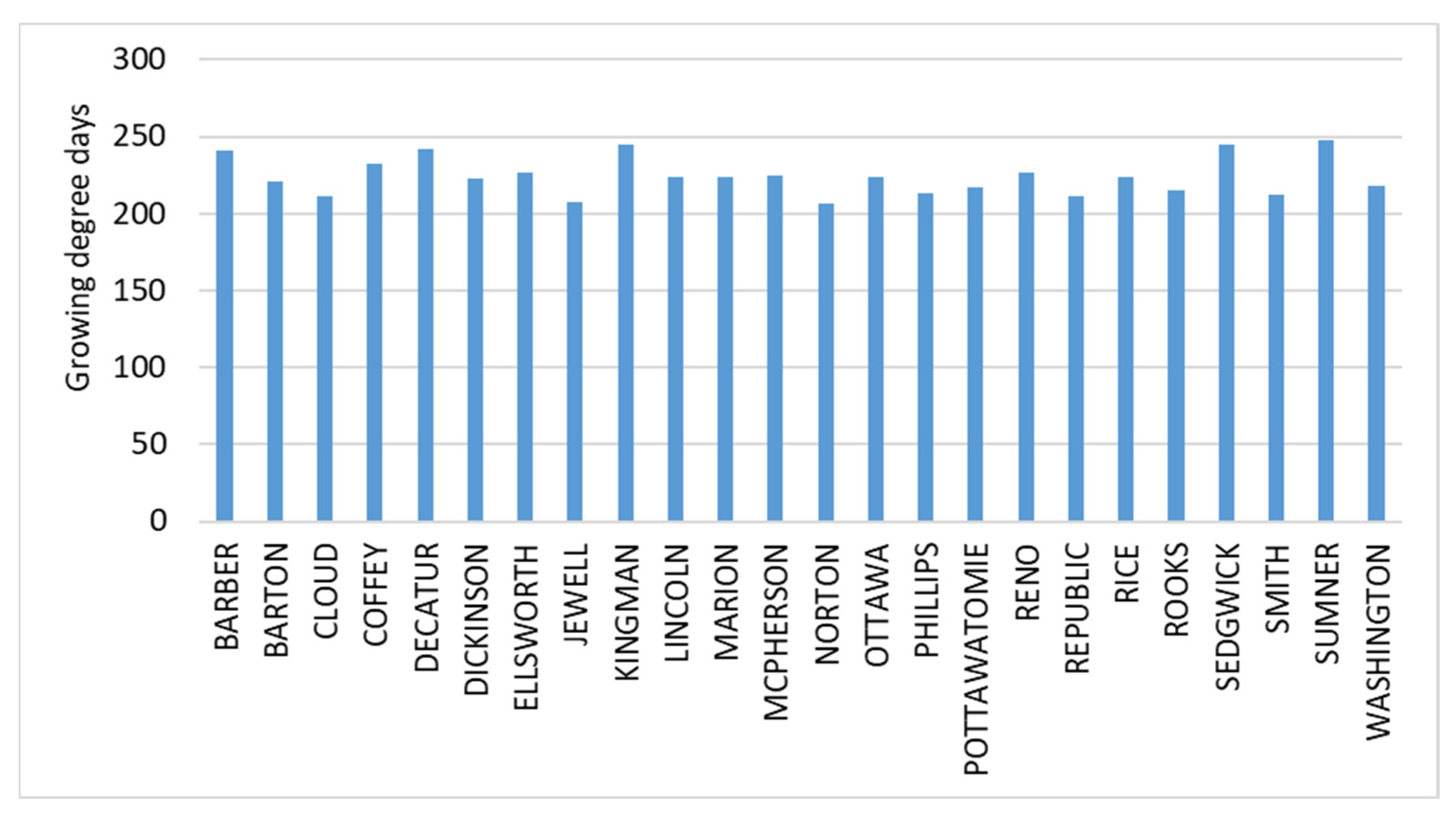
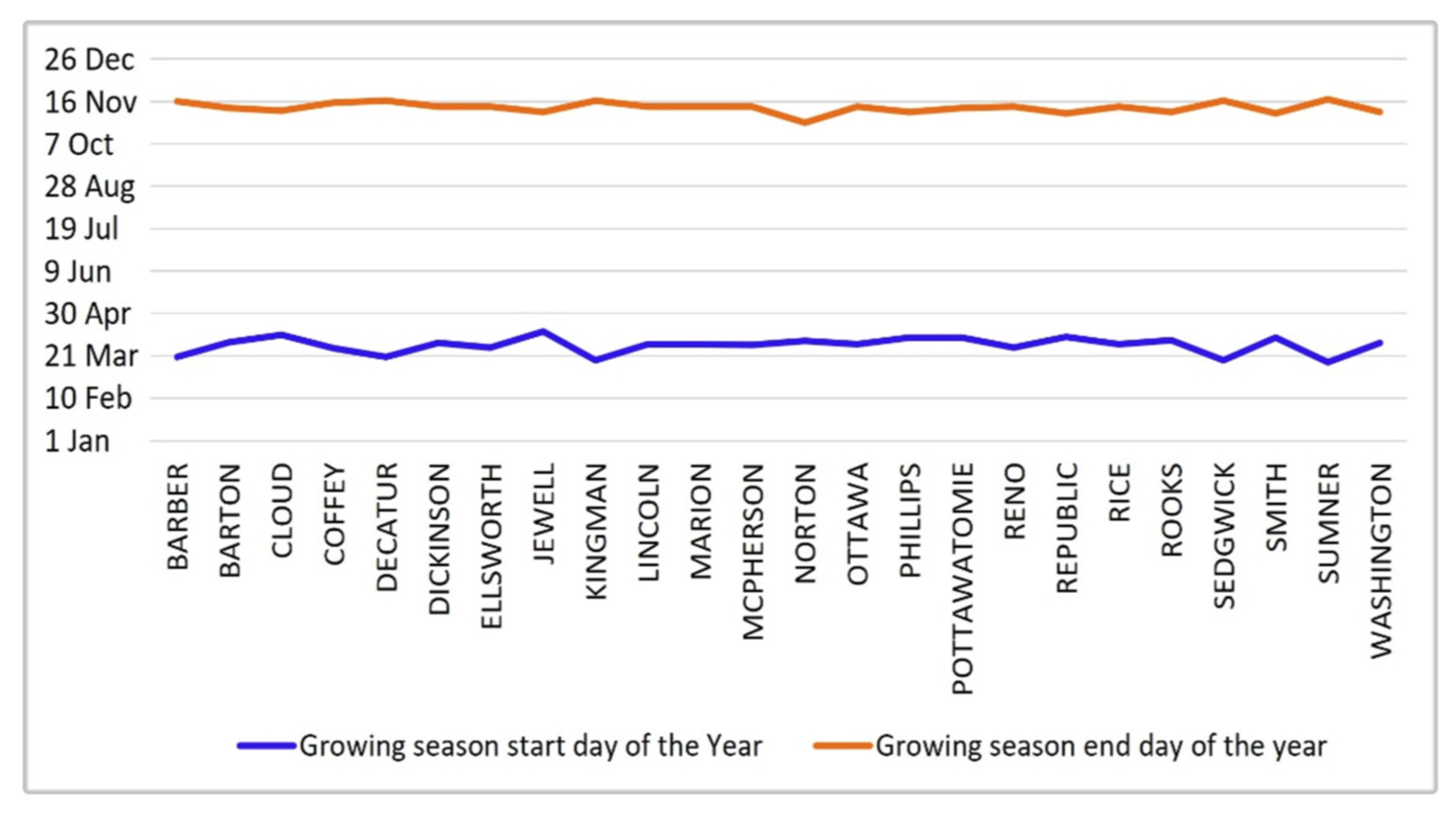
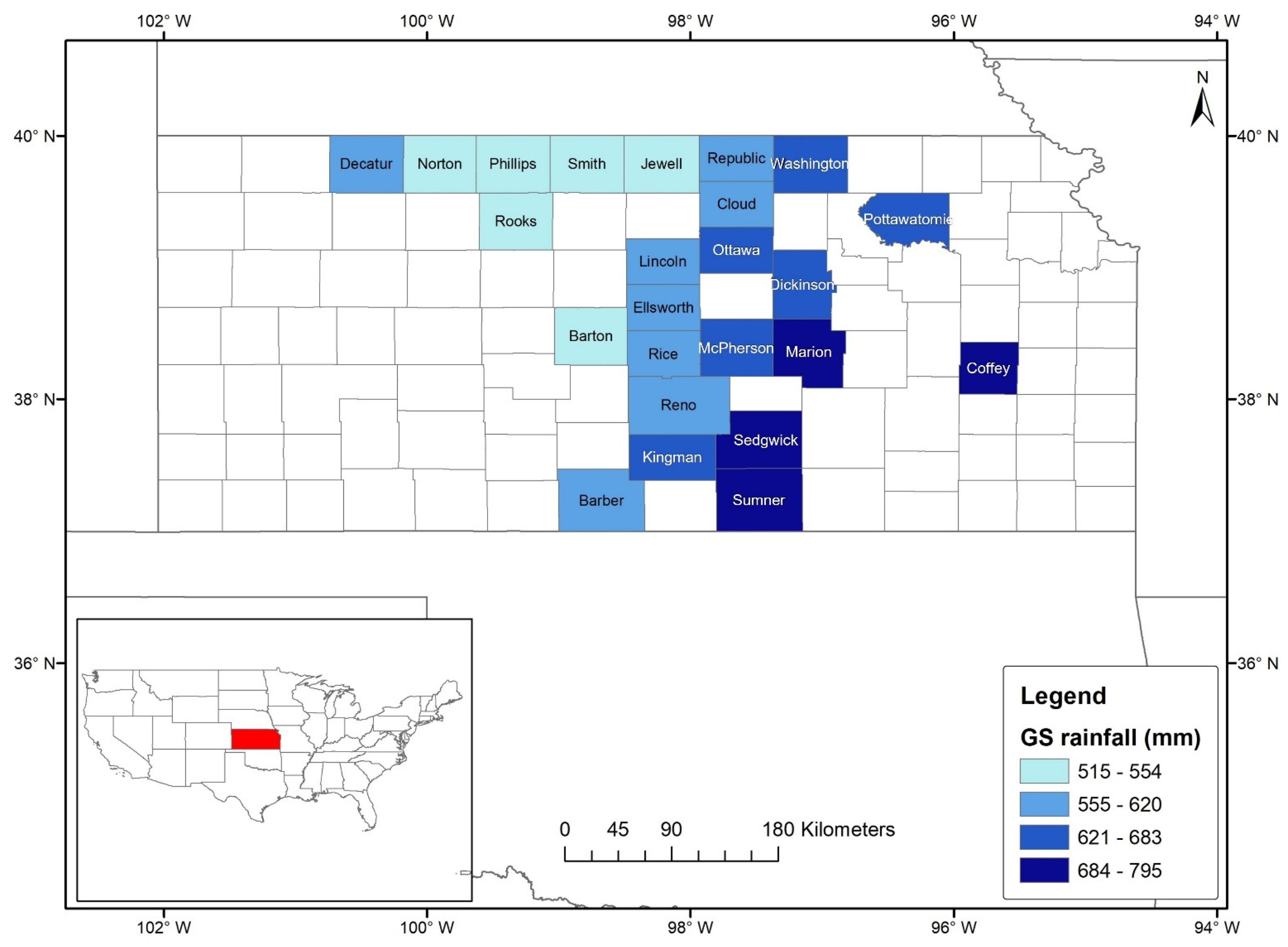
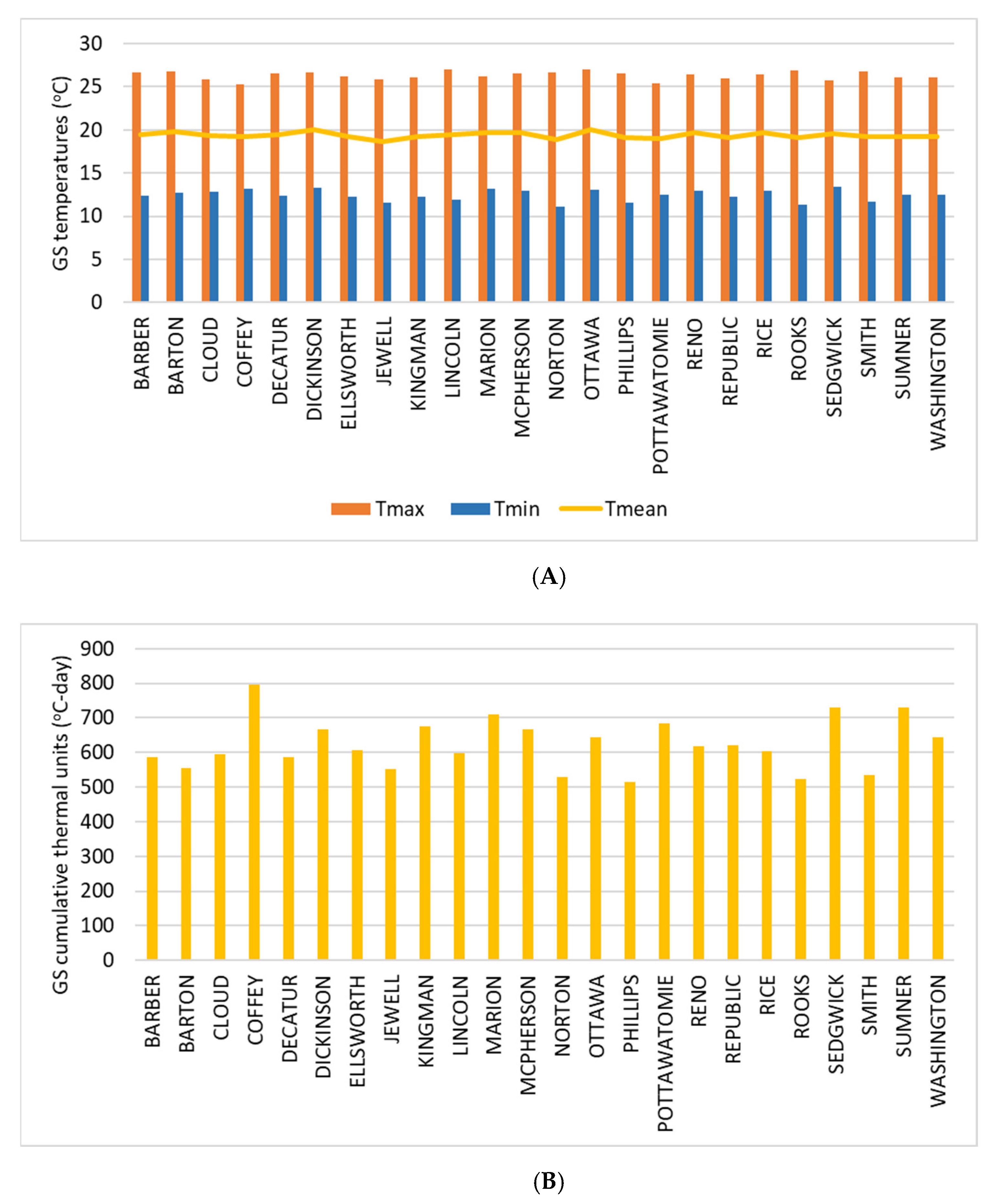
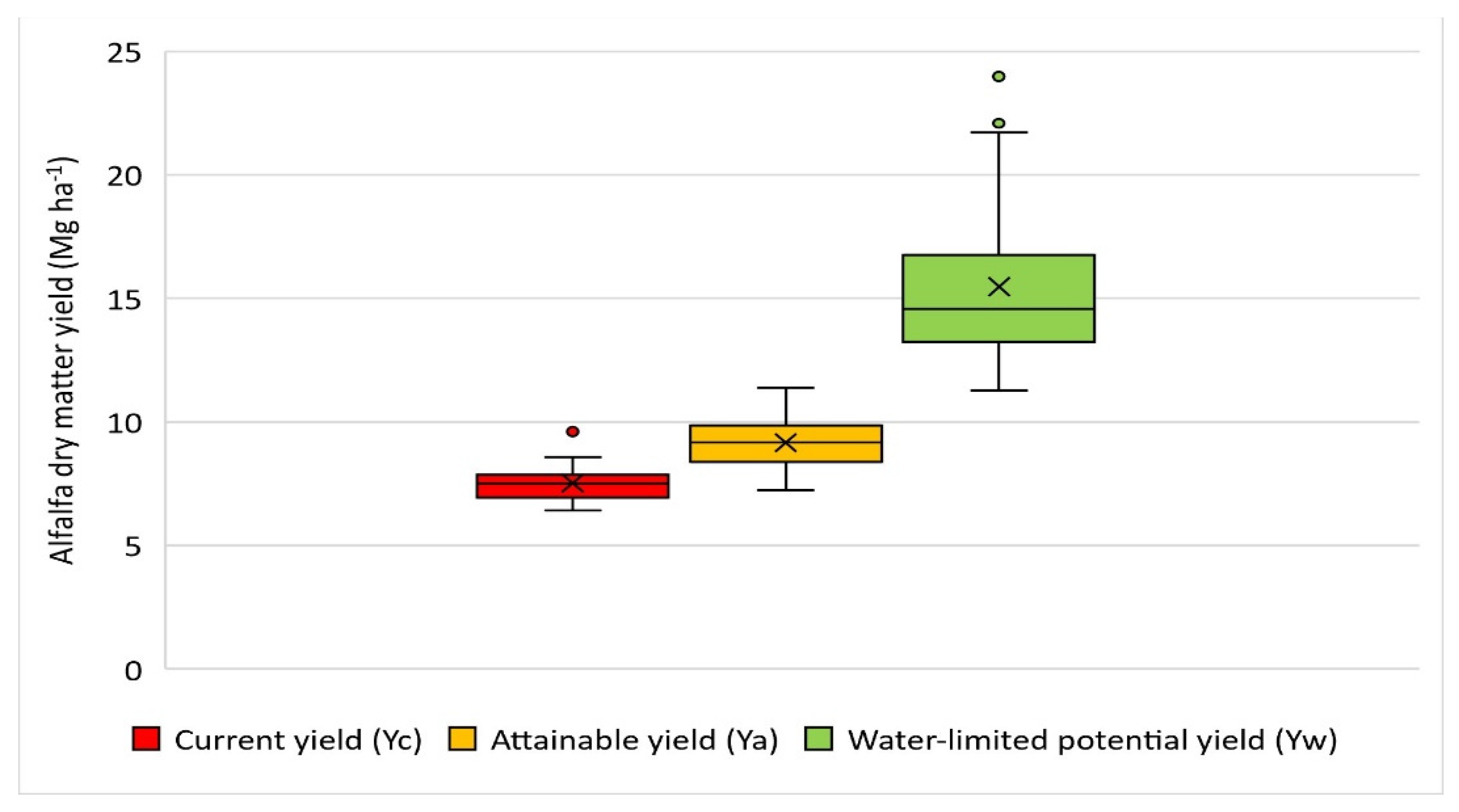
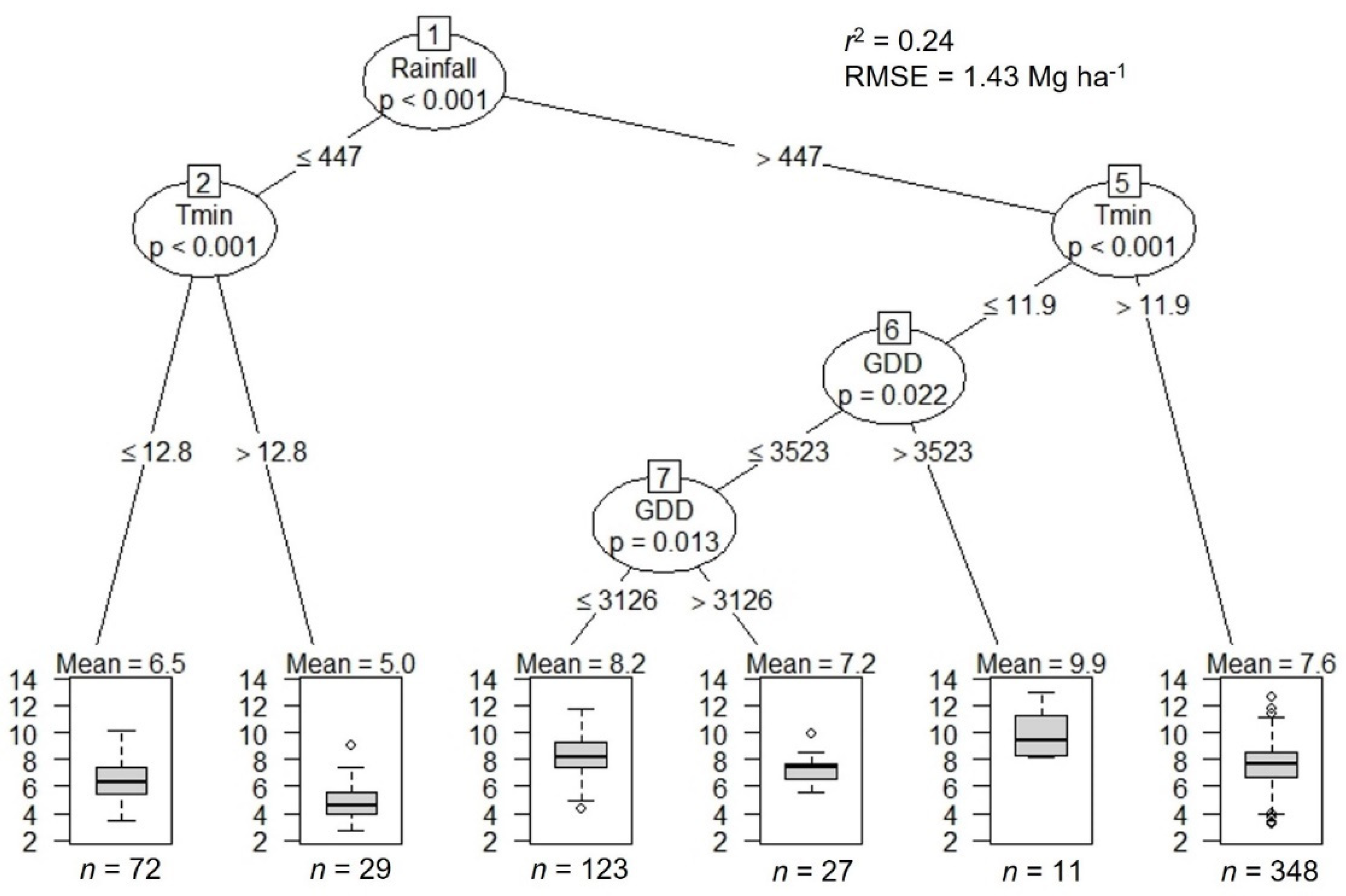
Publisher’s Note: MDPI stays neutral with regard to jurisdictional claims in published maps and institutional affiliations. |
© 2022 by the authors. Licensee MDPI, Basel, Switzerland. This article is an open access article distributed under the terms and conditions of the Creative Commons Attribution (CC BY) license (https://creativecommons.org/licenses/by/4.0/).
Share and Cite
Baral, R.; Bhandari, K.; Kumar, R.; Min, D. Yield Gap Analysis of Alfalfa Grown under Rainfed Condition in Kansas. Agronomy 2022, 12, 2190. https://doi.org/10.3390/agronomy12092190
Baral R, Bhandari K, Kumar R, Min D. Yield Gap Analysis of Alfalfa Grown under Rainfed Condition in Kansas. Agronomy. 2022; 12(9):2190. https://doi.org/10.3390/agronomy12092190
Chicago/Turabian StyleBaral, Rudra, Kamal Bhandari, Rakesh Kumar, and Doohong Min. 2022. "Yield Gap Analysis of Alfalfa Grown under Rainfed Condition in Kansas" Agronomy 12, no. 9: 2190. https://doi.org/10.3390/agronomy12092190
APA StyleBaral, R., Bhandari, K., Kumar, R., & Min, D. (2022). Yield Gap Analysis of Alfalfa Grown under Rainfed Condition in Kansas. Agronomy, 12(9), 2190. https://doi.org/10.3390/agronomy12092190






